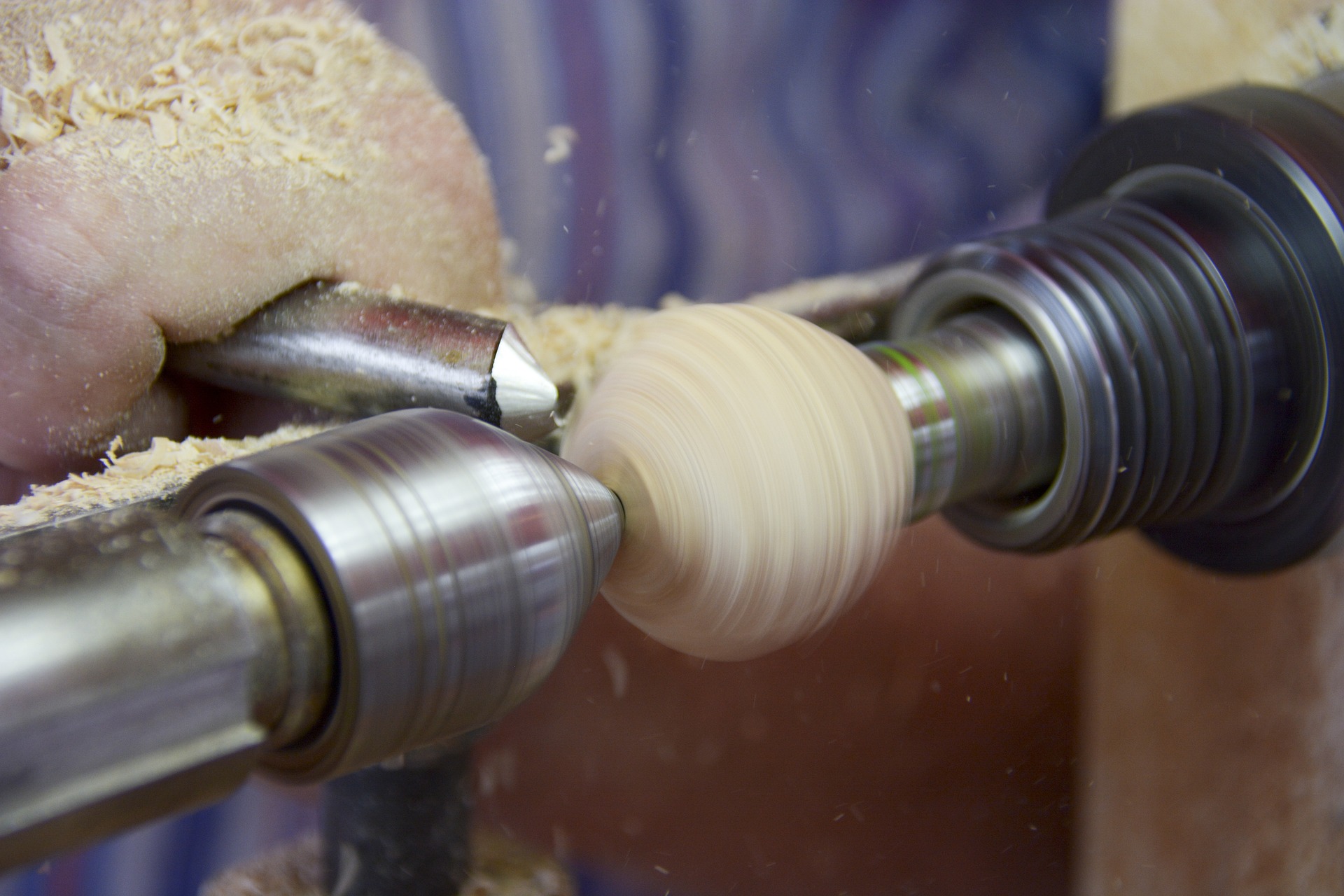Wood Lathe Turning Speeds (That the Pros Recommend)

There’s a very simple rule of thumb that the pros use when it comes to wood lathe turning speeds.
It’s so simple, in fact, that you’ll be able to remember it without needing to refer back to this post.
That’s because all you need to do is look at the diameter of the piece of wood you’re turning, and you’ll be able to tell what speed to turn it at.
Here’s how it goes:
1. Find the Diameter of the Wood
This should be pretty easy to do. It’s just the distance from one side of the wood to the other, going through the middle. The easiest way to measure it is to use a pair of calipers.
If you’re not sure how to use them, don’t worry. It’s as simple as closing them around the wood, and then reading the measurement off the side.
If you don’t have a pair of calipers or a ruler, you can just use a tape measure instead.
2. Check to See What Speed to Set Your Lathe To
Here’s where you’ll need to refer to a chart like the one below.
This is the chart for the HSS tools that you’ll find on most wood lathes:
| Diameter of Wood (Inches) | HSS Tools |
|---|---|
| 0 – 1″ | 6,000 RPM |
| 1″ – 2″ | 3,000 RPM |
| 2″ – 3″ | 2,000 RPM |
| 3″ – 4″ | 1,000 RPM |
| 4″ – 6″ | 800 RPM |
| 6″ – 8″ | 600 RPM |
| 8″ – 10″ | 500 RPM |
| 10″ – 12″ | 400 RPM |
| 12″ – 16″ | 300 RPM |
| 16″ – 20″ | 200 RPM |
| 20″ – 24″ | 150 RPM |
| 24″ + | 100 RPM |
3. Set Your Lathe to the Speed From the Chart
If you can’t set your lathe to the exact RPM that the chart recommends, then just set it to the closest one.
In other words, if the recommended speed is 1,500 RPM, and your lathe only has speeds of 1,000 RPM and 2,000 RPM, then set it to 2,000 RPM.
It’s better to go slightly faster than the recommended speed than it is to go slower, because if you go slower than the recommended speed, you’ll end up with a rougher finish and more tear out.
4. Start Turning
The final step is to start turning your piece of wood.
You’ll find that it’ll be much easier to turn at the right speed. The lathe will feel “locked in,” and it won’t be wobbling around or shaking.
Of course, you’ll still need to use the right technique and have a sharp set of tools if you want to avoid tearing out the wood, but those are topics for a different post.